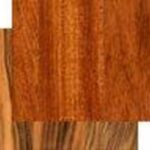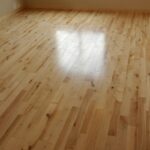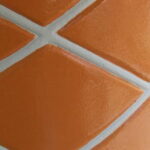Installing prefinished bamboo flooring can be a do-it-yourself job – provided you do your homework first. This article will give help you to get off on the right foot for installing your new bamboo floor without having the expense of hiring a professional installer. Depending on the type of bamboo floor you are installing, there are four available methods: glued down, nail/staple, click lock floating, and engineered floating.
Where to Install Bamboo Floors
Prefinished bamboo floors can be installed on grade (ground level) or above grade (above ground level) and on the following types of subfloors:
- Wood subfloors (but not particle board). The subfloor should be steady and structurally sound.
- Concrete subfloors. These should be a minimum of a month old and have passed all tests for moisture.
- Various radiant heating systems. Provided these are approved by the manufacturer of the flooring.
- Existing floor surfaces made of hardwood, vinyl, bamboo, tile or porous stone.
Note: The only time prefinished bamboo flooring should be considered for below grade installation – such as in basements – is if the manufacturer has specifically approved this.
Some Installation Basics for Prefinished Bamboo Flooring
There are several basics to observe in installing bamboo flooring. For example, you should install the bamboo parallel to the longest wall. And be careful where you store your new bamboo flooring: in the garage or in direct sunlight are both no-no’s.
The expansion and contraction of your bamboo floor needs to be taken into account. Leave at least a ½” perimeter gap for this reason – more for large rooms or humid climates.
Underlayment is important. Standard foam, combination foam/film, upgraded foam, and cork are all good options. Also important is a moisture barrier between the bamboo flooring and the subfloor. This barrier becomes imperative if you are laying the floor over concrete or in a humid climate.
Before beginning, work out how many rows of bamboo you’ll be putting down and calculate so that the first and last rows are roughly equal in width.
In addition:
- It may be necessary to scribe fit the first and last rows. This is so they match the wall contours.
- To get an even-looking floor you should stagger all joints about two to three times the plank width.
- When starting a new row, adhere to the manufacturer’s recommended board length.
- Check all boards for damage or discoloration prior to installation.
Preparation for Installing Prefinished Bamboo Flooring
Before you begin installing your bamboo floor there are certain preparations you should make. These include removing existing flooring, testing the moisture level of wood subfloors with a moisture meter, or in the case of a concrete subfloor, doing a calcium chloride and pH alkalinity test.
You should also check that the subfloor is level and has no irregularities.
Your bamboo flooring needs to acclimate to its new environment. Ask for it to be delivered 2-7 days prior to installation and store it in the room where it will be installed. You will also want to test the moisture of the bamboo with a moisture meter.
In addition:
- If so desired, undercut the door casings.
- Remove doors and molding.
- Sweep and vacuum prior to installation.
- Follow all safety instructions from the manufacturer.
Conclusion
These are the basics for installing prefinished bamboo flooring. For detailed instructions for each installation method, go to the FindAnyFloor.com installation guides in the section on bamboo.






